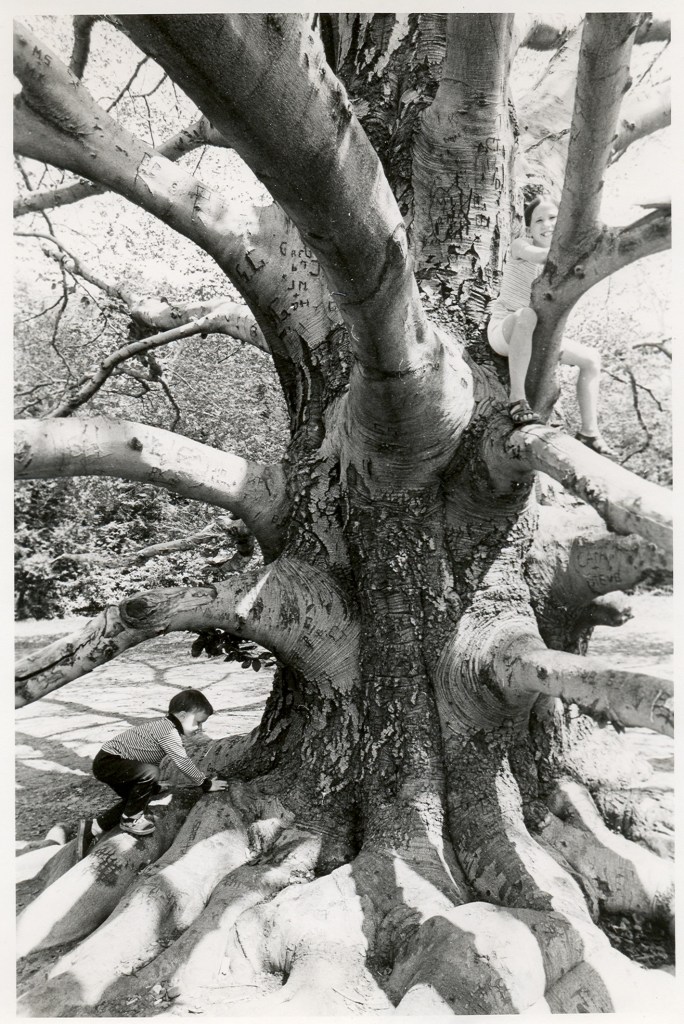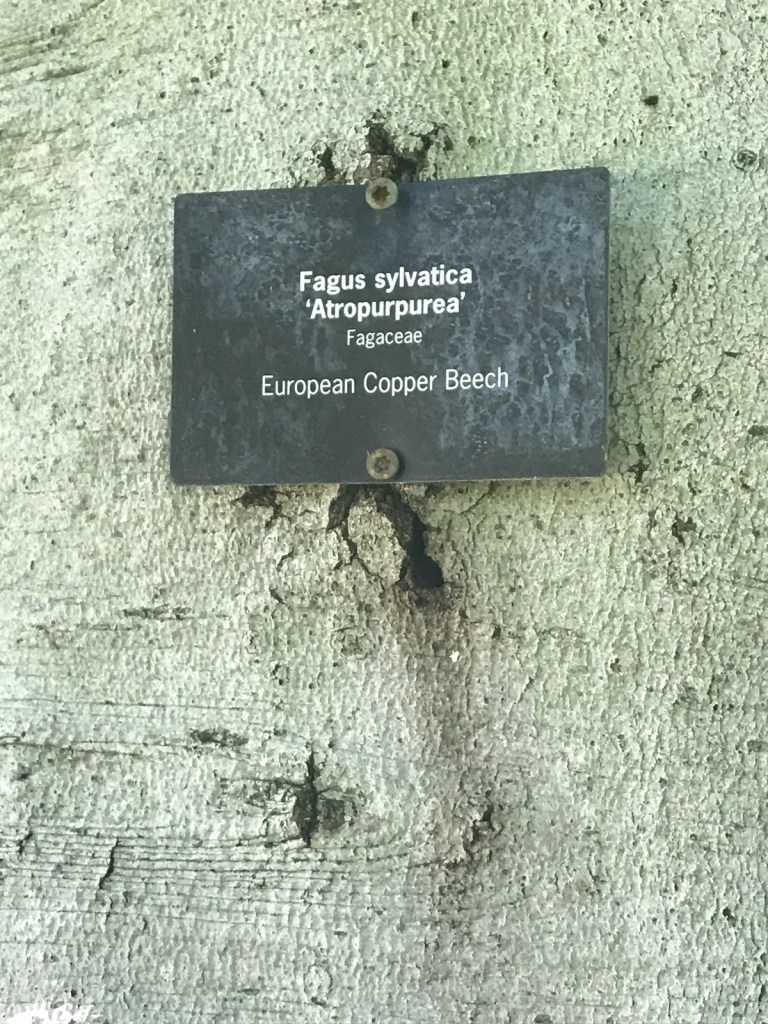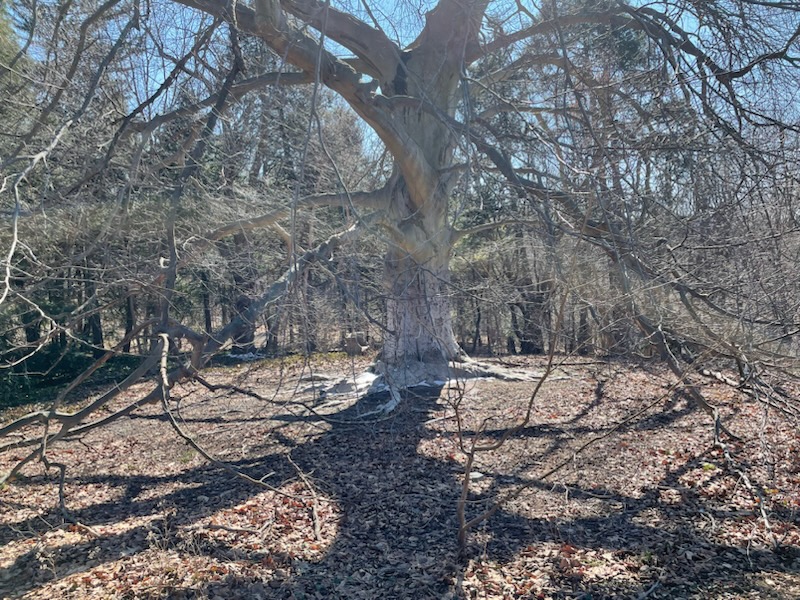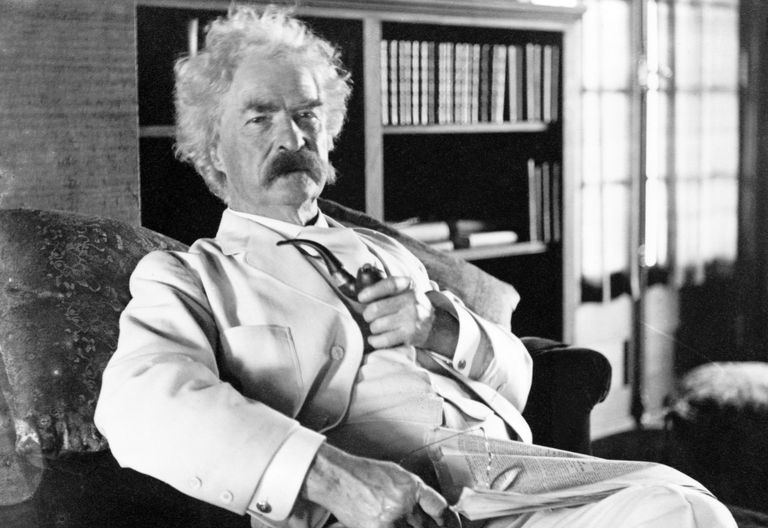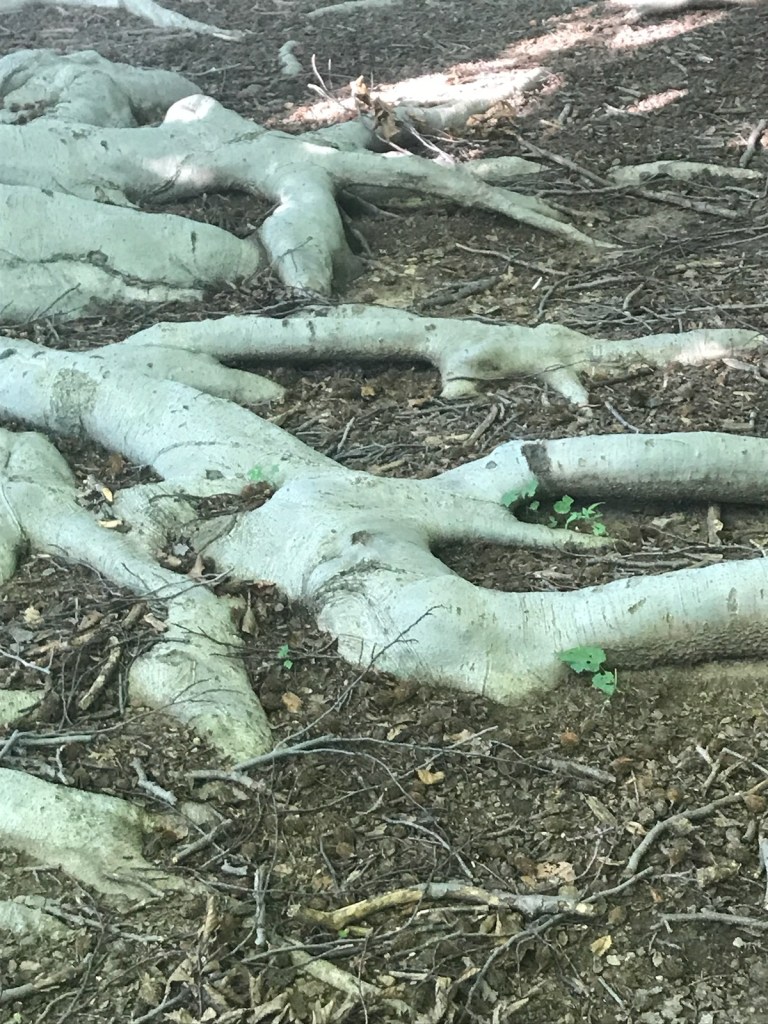or in memory or right in front of your eyes can be remarkable.
Trees can be so personal, loved by an individual, as well as public and admired by many. Almost everyone, I’ve found, remembers one particular tree—it burns in hindsight as vividly as any madeleine Proust ever consumed. I’ve realized this in teaching arborists writing skills, learning from peoples’ stories how many treasure the memory of a certain Malus domestica in their childhood which was their formative experience with dendrology. When I encounter a wizened backyard apple it still gives me a jolt of pleasure.
It’s not only arborists though. Some trees attain a broader symbolic meaning for many, many people above and beyond those whose professional lives are tinted green. Some aged specimens, by way of their habit, their hue, their history, just stand out.
Douglas Still, understanding this truth, recently created the podcast This Old Tree to highlight heritage trees and the human stories behind them. Drawing upon his experience as City Forester for Providence, Rhode Island, as well as stints for NYC Parks Department and as past president of the Society of Municipal Arborists, Doug focuses on the meaning and importance of such standouts as the majestic redwood Luna, Thoreau’s Concord Elm, and the 9/11 Survivor Trees.
He has said, In our psyche, we know trees are more than just functionally important. What drives me most is the thought that trees will outlast us, provide comfort and inspiration for 100 years or more, and connect life experiences between generations. Every city forester has witnessed the emotional bonds between residents and their trees. Trees create a sense of place; they shape our experience of historic landscapes, as well as our own streets and backyards. Old trees are especially valuable, meaningful and irreplaceable.
Great stuff.
I was privileged to share a short piece about an icon that meant a lot to me as one of half a dozen accounts collected in the most recent This Old Tree episode. You can check out “Tree Story Shorts” at https://www.buzzsprout.com/2044179/11838723 and here is a rough approximation of my piece in that spoken segment:
My favorite tree would have to be the silvery-barked copper beech, Fagus sylvatica Atropurpurea. When I was growing up in a little town in New York’s Hudson Valley, we would gather beneath what we called “The Elephant Tree.” (Photo courtesy of Hastings Historical Society.)
The landmark stood on the overgrown lawn of the long abandoned mansion of Billie Burke, famed as Glinda, the Good Witch in the Wizard of Oz.
The tree drew kids of all ages to congregate beneath its distinctive umbrella-like branches. In her book about the beech, Casting Deep Shade, poet C.D. Wright tells us that the Druids grew wise eating the nuts of the species. And that in dreams, the tree signifies both wisdom and death. The Copper Beech. Tree guru Michael Dirr chooses it as “one of my great plant loves,” and from childhood it has been one of mine, too. Recently, thinking about that tree, at an age when some folks are starting to contemplate a condo in Florida or (more my style) retiring to a groovy vintage Airstream, I have fallen again for the beech tree the way I fell for an Adonis in my seventh-grade class. All I want to do is swoon.
A sixty-foot local attraction well-known in my home town, the Elephant Tree’s knob-kneed trunk resembled nothing so much as the columnar legs of its namesake animal. Here was every kid’s dream: a private, self-contained refuge from the wider world. From the outside, long branches twisted sinuously from the crown to the ground, spreading outward like a hoop-skirt. Inside this protected space we found ethereal cathedral light and branches that were perfect for climbing. Kids hid there, gossiped there, made out there. The trunk, as with so many beeches, was hashed with initials and hearts. Here is a similar one.
Brought to America in the 1600s, the towering, always impressive European Beech tops out at a full 70’. The cultivar atropurpurea shares the species characteristics but is distinct in color. While not a street tree, it takes its place among many landmarked gardens and properties. The grand homes of Newport are known for their beeches. Lyndhurst in Tarrytown, New York, the former estate of robber baron Jay Gould, boasts an imposing collection. Wave Hill, the public garden in New York City’s Riverdale section of the Bronx, features two Copper Beeches that sit across park lane from each other like kissing cousins.
“We don’t know much about the beeches except that they were probably planted after 1890, when the property came under the same ownership,” Louis Bauer, former Director of Horticulture at Wave Hill, told me once. With an unparalleled view across the Hudson River to the Palisades, Wave Hill has a storied past, including notable occupants such as Theodore Roosevelt and Mark Twain.
The latter said of the estate: “I believe we have the noblest roaring blasts here I have ever known on land; they sing their hoarse song through the big tree-tops with a splendid energy that thrills me and stirs me and uplifts me and makes me want to live always.”
Copper might be a slight mischaracterization the hue of the tree’s leaves, which can change over the course of a season from a reddish purple in spring to blackish purple by summer.
The deciduous, simple leaf is elliptic and blunt, appearing wavy, with five to nine veins on each side. Each cultivar presents itself slightly differently in color and shape. When I have visited Wave Hill’s copper beeches they were really more full forest green, with only a slight a metallic tinge.
As for those “knees.”
The older trunks have bulges and burls that are quite unlike any other tree.
Of the silvery grey bark, beech lover Dirr writes of “a beauty unmatched by the bark of other trees.” Something about that bark begs for the jack-knives of starry-eyed young romantics. (“Your name and mine inside a heart” promise the lyrics of ‘Walk Away, Renee,’ one of the ultimate paeans to teenage love.)
At Wave Hill, the trunk of one tree has been pretty well graffiti-gouged.
While the other cousin is pristine. A mystery as to why.
We know that people since time immemorial have fallen for beech trees, their smooth grey bark, eminently useful for leaving your mark. On an old stage road in Tennessee, Daniel Boone once killed a bear. Nearby stood a huge beech tree, and Boone carved into its trunk: “D. Boone Cilled a Bar in 1760.”
Virginia Woolf name-checked to the beech in Night and Day. “It seemed a mere toss-up whether she said, ‘I love you,’ or whether she said, ‘I love the beech-trees,’ or only ‘I love—I love.’”
I have discovered carved beeches in what was supposedly an unspoiled old-growth forest. Some tree people find autobiographical messages on beech bark annoying. I don’t. Thoreau said, ”I frequently tramped eight or ten miles through the deepest snow to keep an appointment with a beech-tree, or a yellow birch, or an old acquaintance among the pines.” I like to think of some lost soul slogging miles through a mysterious, tangled forest, too shy to unburden himself to the person he cares for, and surreptitiously taking switchblade out of pocket to pronounce, on bark, indelibly, the sentiment I love-I love.
Atropurpurea has no taproot. Instead, in the open understory beneath the low-hanging branches, a pattern of interlacing roots rise close to the surface.
For flowers, the tree offers a small female cluster, and a male cluster that hangs on a shorter stem than the American Beech. The nut has long, angular sides and a deep brown color, encased in a bristly husk. Beech nuts can be consumed by deer and bears as well as by birds and rodents – and by humans, who have been known to roast and brew them in place of coffee.
A nice place to drink a cup would be under the sweeping, twisted, copper-green branches of an “Elephant Tree.”

Ghosts of Mark Twain, Daniel Boone and Virginia Woolf, you are cordially invited.





